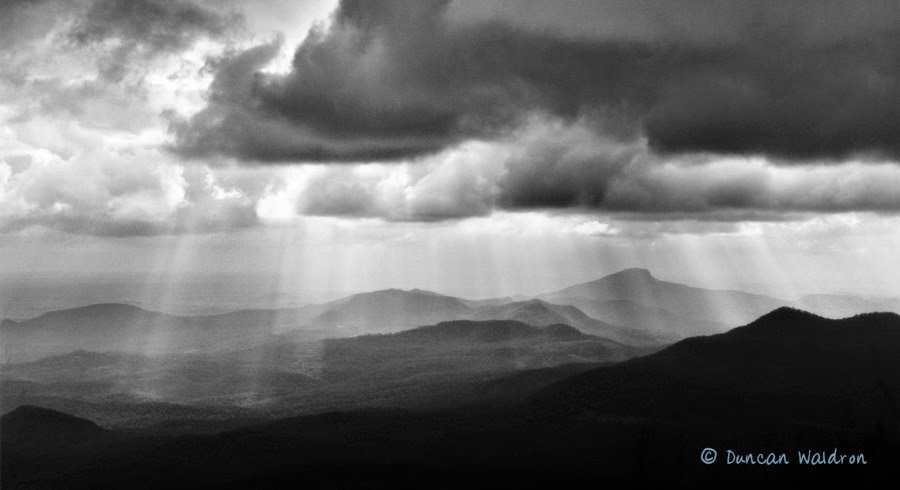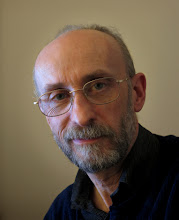It's been a long time since I made photographic prints from colour negatives. I'd been on the photographic team at the Royal Observatory Edinburgh for over 15 years, and left professional photography behind in 1998, when I quit that job for good. During that time I was employed on some pretty exacting work, meeting the scientific demands of the end-user.
In response to a Twitter friend describing her progress in building an enlarger using an RGB LED system, I've delved into the memory banks to work out how that would relate to conventional YMC colour printing. I'll apologise in advance for lack of images; I've been too busy working out the details that follow. If you want pictures, you might find one or two in the links at the end.
In essence, a colour print needs the right blend of red, green and blue light to produce the desired result. Although some advanced emulsions have employed more than just three light-sensitive layers in order to compensate for the limitations of photographic dye technology, a photographic film or paper at its most basic has layers sensitive to red, green and blue—the primary colours of light*.
The normal method of making colour prints involves a single exposure through yellow (Y), magenta (M) or cyan (C) filters. These are the secondary colours of light and when used in printing, you need just two filters to produce the right balance of colour; in most cases, only the Y and M filters will be used. Because each filter is used to reduce the effect of image-forming light, it is called subtractive printing.
The more Y filtration is used, the less exposure the blue layer receives, and the more M filtration, the less exposure to the green layer. It is only necessary to balance the ratio of these two factors with the (effectively fixed) red exposure, while the length of exposure controls the final print density. The actual amount of Y and M filtration required depends upon the film stock and how it was exposed, as well as the printing paper; different batches of film and paper will require different levels of filtration.
The good thing about this system is that you have just one exposure, during which any dodging and burning—to alter local print density—will affect all colours equally. The downside is that you need a more expensive enlarger with a 'colour head'.
The alternative method of colour printing is additive, where individual exposures are made sequencially through red, green and blue ('tricolour') filters; by this means, each colour layer in the paper receives the appropriate level of exposure for a balanced print. The upside to this method is relative cheapness: you only need a BW enlarger and a set of 3 gelatin filters. The downside is that you have to make sure you don't nudge the enlarger or printing easel between exposures (which will disturb the registration of the three exposures), and also that it becomes very difficult to do dodging and burning that evenly retains the proportions of R, G and B light, because you have to dodge/burn identically in each exposure.
A variation of additive printing appeared in the form of the Philips PCS-150 "Tri-One" colour head. This allowed the arguably more intuitive R, G and B filtration in a single exposure, so that dodging and burning are as easy as in BW or subtractive colour printing. An RGB LED system would allow single-exposure printing, just as the PCS-150 did.
But what about an RYB LED setup? Is it possible to make colour prints using the artist's primaries? Let's think about this…
- Red, being a light primary, will affect only the red-sensitive layer
- Yellow, being a light secondary, will affect both red- and green-sensitive layers
- Blue, a primary, will affect only the blue layer
Now, suppose the R and Y exposure levels are identical, and you want to remove that green cast, you reduce the Y exposure by a given amount, and you then have to increase the R exposure by the same amount. But what if the R and Y exposure levels are different? Now you'll need to calculate the relative proportions of red exposure that come from the R and Y LEDs, and adjust the R to compensate for the change in Y. Not impossible, but unless you relish the challenge of building a system that makes the compensation automatically, I'd avoid this approach. It's a recipe for headaches.
What about YMC, using an RGB LED system? Here, the waters are a little murkier, but let's dip a tentative toe in. First, let's think about conventional YMC printing: typically, the enlarger head has a mechanism that lets you "dial in" the desired levels of filtration for each colour, and this is achieved by progressively swinging a dichroic filter into the light path; the more a filter is moved, the greater the amount of light that it intercepts and the more effect it has on the colour reaching the negative.
For example (and let's make it simple by assuming 0-100 units of filtration are available): by setting Y-M-C at 0-0-0, the light is unfiltered, and effectively 'white'. By dialling in 50-33-0, the yellow filter blocks 50% of the blue light, and the magenta filter blocks 33% of the green; there is no cyan filtration. Expressed in terms of image-forming RGB light:
50Y = 50B
33M = 67G
0C = 100R
blue is reduced to 50%, green is reduced to 67% (just 33% is blocked), and red is at full strength. If this gives a perfect print, then those are the RGB values we're aiming at.
Now let's see how it works out using the RGB LEDs to produce yellow, magenta and cyan light. Dial in the same levels, Y-M-C 50-33-0; the situation is now somewhat different: instead of cutting blue, green and red light by those amounts, you are producing light as follows:
50Y = 50R + 50G + 0B (you haven't just blocked blue light by 50%, you've produced red and green)
33M = 33R + 0G + 33B (you haven't just blocked green light by 33%, you've produced red and blue)
0C = 0R + 0G 6+ 0B (you haven't just reduced red light by nil, you've produced no light at all)
Now simply add those light levels to get the total amount of R, G & B light:
83R + 50G + 33B
Compare these figures with the 100R+ 67G
100Y = 100R + 100G + 0B
100M = 100R + 0G + 100B
Add these together and so far, we have:
200R + 100G + 100B
But you can't have 200% light output, so reduce these values by 50% to get:
100R + 50G + 50B
Compare this with the 100R+ 67G + 50B that we're aiming for, and you can see we're under by 17G. No problem, just increase the green light by that amount. How do we do that? Well, green comes from both Y and C (Y is red + green, and C is blue + green). The headache is starting, about now...
17G comes from 17Y + 17C, right? Yes, but you've also now added 17R and 17B, so you end up with
117R + 67G + 67B
I'll get the painkillers!
So, it looks like any attempt to generate the right mix of light by using the R, G and B LEDs to work in pairs to generate Y, M and C light is either unnecessarily complicated or doomed to utter failure. The bottom line is: you need R, G and B light to act upon the emulsion layers sensitive to those colours, so what you need is there from the start; there's no need to try to replicate YMC subtractive printing.
As for which might be more intuitive for an artist-photographer, with a somewhat uncertain foot in each colour camp, you would approach RGB colour correction by saying "is the print too red? ... then reduce the red light"; "is it too yellow? ... then either reduce yellow (red and green) or add blue".
For an overview of subtractive colour printing, this Lomography article is a good start, as is this Shutterbug article. This Google books preview talks about both additive and subtractive printing.
For information about tricolour printing filters, see this Kodak page.
And for Lilly's journey in building her system, here's the Tweet that prompted this post. I might even order one for myself...

































